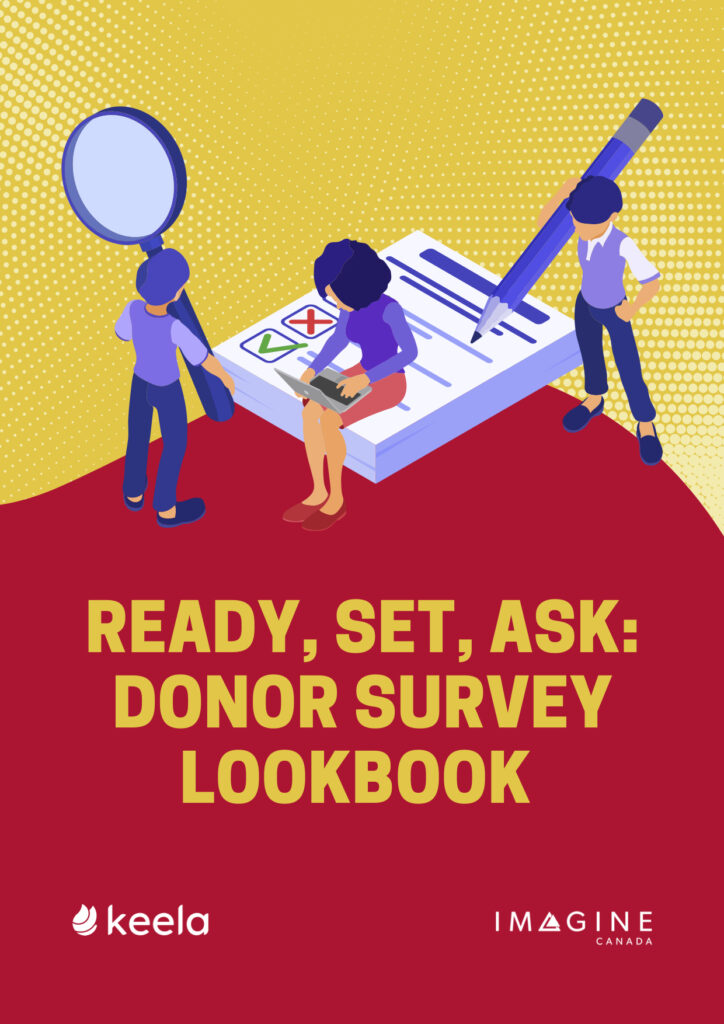From Prospecting to Partnership: A Guide to Effective Donor Cultivation


If you ever ask yourself, what is donor cultivation and why is it important, you’re in the right place. Donor cultivation is part of fundraising basics and holds the key to success for nonprofits. It involves the deliberate and thoughtful process of engaging and nurturing relationships with individuals who generously contribute to your organization’s mission.
Why is the donor cultivation cycle so crucial for nonprofits, you may wonder? Well, imagine your donors as the lifeblood of your organization—each one possessing the potential to become a steadfast supporter, advocate, and catalyst for change. Cultivating these relationships is the secret ingredient that propels nonprofits forward, allowing them to expand their reach, fund critical initiatives, and create a profound impact on the communities they serve.
Together, let’s cultivate donors towards a thriving community of dedicated supporters who are passionately committed to your cause.
Why Donor Cultivation Matters
By shifting the focus of your fundraising cycle from transactional fundraising to nurturing meaningful connections, you can unlock a wealth of advantages while avoiding the drawbacks of solely chasing donations.
The Benefits of Donor Cultivation
Some of the benefits of the donor cultivation process include:
- Increased donor loyalty: Cultivating relationships fosters a sense of loyalty and commitment among major donors and recurring donors, encouraging long-term support and engagement.
- Higher donor retention rates: Building strong connections reduces donor attrition, ensuring continued contributions and sustained impact.


Calculate your donor retention rate with this FREE Advanced Donor Retention Calculator!
With this Advanced Donor Retention Calculator, you can calculate your retention rate, identify your biggest supporters, and build fundraising strategies to ensure donors continue their support.
- Enhanced nonprofit donor satisfaction: Nurturing relationships allows you to understand donors’ needs and preferences, leading to personalized and meaningful interactions that leave them satisfied.
- Potential for increased giving: Donors who feel connected to your cause are more likely to increase their giving over time and support your organization’s growth and initiatives.
- Deeper understanding of donor motivations: Major donor cultivation efforts provide insights into donors’ values, aspirations, and motivations, enabling you to tailor your communication and engagement strategies more effectively.
While there are certainly many benefits to donor cultivation, there are also some drawbacks that you need to be cautious of including:
- Resource Intensive: Cultivating donor relationships requires significant time, effort, and resources. Building personalized connections, implementing engagement strategies, and maintaining ongoing communication can be resource-intensive for nonprofit organizations with limited capacity.
- Slow Process: Donor cultivation is a long-term endeavor that requires patience and persistence. It takes time to establish trust, nurture relationships, and see the desired results.
- Variable Success Rates: Despite the best cultivation efforts, not all donor relationships will yield the desired outcomes. Some donors may not fully engage or increase their support, even with strong cultivation plans.
- Donor Fatigue: While cultivating relationships is crucial, there is a risk of overwhelming donors with excessive communication or constant requests for engagement and support. This can lead to donor fatigue, where individuals feel inundated or emotionally exhausted, potentially impacting their continued involvement.
- Opportunity Cost: Devoting significant resources to donor cultivation may divert attention and resources from other critical areas of nonprofit operations, such as donor retention, community outreach, or infrastructure improvement.
The Donor Cultivation Process
Now that you know the benefits and drawbacks of donor cultivation, you’re ready to dive into the process. The key steps to donor cultivation are:
Identifying Prospective Donors
Conduct prospect research and identify individuals or groups aligned with your organization’s mission and values, considering factors such as philanthropic interests, past giving history, and connections to your cause. This is a very important part of donor cycle fundraising!
Engaging with Donors in a Personalized and Meaningful Way
Craft personalized messages that resonate with each potential donor’s interests, values, and past interactions with your nonprofit organization. The best place to find this information is in your database. If your database isn’t up to date (or you don’t have a database), engage your team, dive into your files, or start researching a major gift donor online.
Nurturing the Relationship
Frequent and valuable outreach to your donors is a key aspect of donor cultivation. Ensure that you maintain regular contact through various channels, such as email newsletters, social media updates, and personalized updates on the impact of their contributions. It’s also always a good idea to ask your donors how they like to be communicated with. You may have some donors that are happy to hear from you via email and others that would prefer the occasional phone call.
Asking for Support in the Right Way at the Right Time
Before making an ask, it’s important to evaluate a donor’s level of engagement, interest, and capacity to contribute. Donor solicitation involves looking for signals of increased commitment, such as attending a fundraising event, expressing enthusiasm, or engaging with your organization’s activities – these are key indicators that your donors are engaged and happy with the work your organization is doing.
Understanding your donors’ history with your organization is important in order to categorize them based on their giving capacity, interests, and engagement level. Tailoring your ask based on these segments is a great way to increase response rates.
Finally, when you’re ready to make the ask, approach your major gift donors with a clear and compelling case for support, highlighting the specific impact their contribution can make. Personalize the ask for prospective donor based on their motivations and preferred giving methods.
Donor Cultivation Strategies
To ensure the success of your donor cultivation plan, it’s important to build a strong strategy and execute it. Let’s dive in to the key donor cultivation ideas that can help you maximize donor engagement, increase giving, and create a culture of gratitude and recognition within your organization.
Tailoring Your Approach Based on Donor Preferences and Giving History
One of the most effective ways to cultivate donors is by tailoring your approach to their individual preferences and giving history. Here are a few strategies to consider:
- Customized Giving Opportunities: Tailor your fundraising appeals to align with donors’ interests and past giving patterns. By presenting opportunities that match their passions, you can enhance their connection to your cause and inspire them to contribute at higher levels.
- Donor Surveys and Feedback: Regularly seek input from your donors through surveys or feedback forms. This not only demonstrates that you value their opinions but also helps you gather valuable insights that can inform your cultivation strategies. Adjust your approach based on the feedback received to strengthen donor relationships.


Get Access to FREE Donor Survey Templates!
This lookbook contains three common surveys to send to your donors including the questions, answers, and suggested formatting. Use this lookbook to start gathering important information about your donors.
- Using Technology to Enhance Donor Stewardship and Cultivation: In the digital age, leveraging technology is essential for effective donor cultivation. Technology enables personalized communication, streamlined donor management, and seamless stewardship efforts. This starts with the right donor management and fundraising platform, Keela, to help you track all of the important information you need to know about your donors.
Involving Donors in the Mission and Impact of Your Organization
Donors, and especially major donors, want to feel connected to the mission and impact of your organization. Actively involving them in meaningful ways not only deepens their engagement but also strengthens their commitment to your cause. Consider the following approaches:
- Donor Recognition Events: Host exclusive events or gatherings to celebrate donors and showcase the impact of their contributions. This provides an opportunity for donors to connect with your organization’s leadership, program beneficiaries, and other like-minded supporters.
- Volunteer Opportunities: Offer volunteer programs that allow donors to actively participate in your organization’s work. Providing hands-on experiences not only strengthens their connection but also enables them to witness the impact of their support firsthand.
- Donor Advisory Boards: Establish donor advisory boards or committees that allow select donors to contribute their expertise and insights. Involving them in decision-making processes and strategic discussions enhances their sense of ownership and deepens their commitment.
Building a Culture of Gratitude and Recognition within Your Organization
Expressing gratitude and recognizing donors’ contributions is crucial for donor cultivation. When donors feel appreciated and valued, they are more likely to continue their support. Consider the following strategies to foster a culture of gratitude:
- Personalized Thank-You Communications: Ensure that every donor receives a personalized thank-you message promptly after their contribution. This can be in the form of a handwritten note, email, or phone call. Tailor the message to acknowledge their specific donation, express the impact it will make, and emphasize the importance of their ongoing support.


Turn your donors into lifelong supporters with personalized thank-you messages!
Proper stewardship practices such as expressing gratitude to your donors can help increase donor engagement. We have created customizable templates to help get you started!
- Donor Appreciation Events: Host donor appreciation events where you can publicly recognize and celebrate your supporters. This could be an annual gala, a special reception, or even smaller gatherings. These events provide an opportunity to express gratitude, share success stories, and allow donors to network with one another and key members of your organization.
- Feature Donor Stories: Highlight the stories of your donors and the impact they have made through their support. This can be done through newsletters, social media posts, or your organization’s website. By showcasing their contributions, you not only express gratitude but also inspire others to get involved.
Measuring Success in Donor Cultivation
By tracking key metrics, evaluating the outcomes, and adjusting your approach based on insights gained, you can continually improve your donor cultivation plan. Here are a few ways that you can ensure that your donor cultivation efforts are effective.
Track the Right Metrics
To assess the success of your donor cultivation plan, it’s essential to monitor key metrics that provide insight into the donor engagement cycle, donor retention, and overall value. Two of the most important metrics for donor cultivation are retention rate and donor lifetime value.
a) Retention Rate: Retention rate measures donor stewardship and the percentage of donors who continue to support your organization over time. Tracking this metric allows you to evaluate the effectiveness of your cultivation strategies in maintaining long-term donor relationships. A high retention rate indicates successful donor engagement and loyalty.
b) Donor Lifetime Value (DLV): Donor Lifetime Value estimates the total value a donor brings to your organization over their entire relationship with you. It takes into account the average gift amount, frequency of donations, and the donor’s expected lifespan as a supporter. Tracking DLV helps you identify high-value donors and prioritize cultivation efforts accordingly.
Evaluating the Effectiveness of Your Donor Cultivation Plan
To gauge the effectiveness of your donor cultivation strategies, it’s crucial to evaluate the outcomes and measure progress. Here are some methods to consider:
a) Data Analysis: Regularly analyze donor data to assess trends, patterns, and changes in giving behavior. Look for insights such as donation frequency, giving levels, and donor demographics. Compare these metrics over time to identify areas of success and areas that may require improvement.
b) Survey Feedback: Conduct surveys or feedback assessments to gather input from donors and potential supporters. Seek their opinions on their experience with your organization, their satisfaction levels, and their perceptions of the cultivation efforts. Use this feedback to identify strengths and weaknesses in your strategies and make necessary adjustments.
Adjust Your Approach Based on Data and Feedback
Data and feedback should drive continuous improvement in your donor cultivation strategies. Understanding the data and feedback that you have are important, but it’s meaningless if you aren’t making decisions based on the results. As fundraisers, we frequently stick to what we know instead of thinking outside the box, but by understanding your data, you can make adjustments to your strategy along the way and deepen the relationships with your donors.
How Keela Can Help with Donor Cultivation
If you’re looking for a comprehensive solution to streamline your donor cultivation and fundraising efforts now, Keela is here to help. Keela is a donor management and fundraising platform designed specifically for nonprofits. With its range of features, Keela empowers organizations to cultivate strong donor relationships effectively. Here’s how Keela can support your donor cultivation efforts:
- Fundraising: Keela provides robust fundraising tools that allow you to create and manage campaigns, track donations, and analyze fundraising performance. By leveraging these features, you can tailor your fundraising appeals, target specific donor segments, and measure the success of your fundraising initiatives.
- Communications Tools: With Keela’s integrated communications tools, you can easily create and send personalized communications to your donors. Send targeted thank-you messages, impact updates, and cultivation emails to nurture donor relationships and keep them engaged with your cause.
- Donation Forms: Keela’s user-friendly donation forms enable you to create branded and customizable forms that seamlessly integrate with your website. By offering a smooth donation experience, you can encourage donors to contribute and capture essential donor information for future cultivation efforts.
- Nonprofit Intelligence: Keela’s nonprofit intelligence feature provides valuable insights into your donor base and their giving behavior. These insights incorporate giving history, wealth indicators, and demographic data to help you tailor your cultivation strategies, personalize your interactions, and never over or under ask your donors again.
By leveraging the features offered by Keela, nonprofits can effectively manage their donor relationships and cultivate strong connections.
Streamline your donor cultivation efforts with Keela!
See how Keela’s platform helps organizations with cultivation efforts in order to foster a community of dedicated supporters.
Conclusion
In conclusion, donor cultivation is a crucial process that allows nonprofits to build and nurture strong relationships with their supporters. By tailoring your approach, utilizing technology, involving donors in your mission, and fostering a culture of gratitude and recognition, you can create meaningful connections and inspire ongoing support.
To enhance your donor cultivation efforts, Keela offers a comprehensive donor management and fundraising platform. With its powerful features for fundraising, email marketing, donation forms, and nonprofit intelligence, Keela empowers nonprofits to streamline their cultivation strategies, engage donors effectively, and maximize fundraising success.
If you’re interested in learning more about how Keela can help your organization with donor cultivation, book a call with one of our fundraising experts here.


About the author:
Meredith Gray
Head of Marketing, Keela
Meredith has always had a passion for work that makes an impact. Having spent over 7 years working in fundraising, she has gained extensive knowledge in marketing, peer-to-peer, events, and sponsorship and firmly believes that all successful fundraising strategies start with your data.
Having experienced it first-hand, she understands the challenges nonprofits face when building a fundraising strategy and loves connecting with other like-minded fundraisers to brainstorm new and creative ways to leverage data to increase revenue. When not working, Meredith can be found trying out one of Toronto’s diverse restaurants, breaking a sweat in a spin class, or researching her next travel destination.





